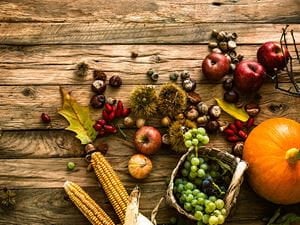
Sukkot is a weeklong Jewish holiday that comes five days after Yom Kippur. Also known as the Feast of Tabernacles or the Feast of Booths, Sukkot celebrates the gathering of the harvest and commemorates the miraculous protection God provided for the children of Israel when they left Egypt. Here are five questions and answers to help you learn more about this important Jewish holiday.
Why do the Jewish people build a sukkah?
The Jewish people build a sukkah – translated as booth or hut – to represent the huts in which the Israelites dwelt during their 40 years of wandering in the desert after escaping from slavery from Egypt.
According to Leviticus 23:42, we sit in the sukkah “in order that future generations may know that I made the Israelites live in booths when I led them out of the land of Egypt.”
Where do we learn about the holiday of Sukkot in the Torah?
Sukkot is mentioned twice in the Torah. The first mention is in Exodus 34:22, where it is referred to as the “Feast of Ingathering at the year's end,” and marks the end of the harvest time and thus of the agricultural year in the land of Israel.
A more elaborate description of the holiday is noted in Leviticus 23:42-43: “You shall live in booths seven days; all citizens in Israel shall live in booths, in order that future generations may know that I made Bnei Yisrael live in booths when I brought them out of the land of Egypt, I Hashem your God.”
In Leviticus, Sukkot is described as a holiday to commemorate the Exodus and the dependence of the people of Israel on God and His will.
Sukkot is later discussed in the Book of Kings by King Solomon and then by the prophet Zechariah.
How long is the holiday of Sukkot?
The holiday of Sukkot lasts for eight days. The seventh day of Sukkot is known as Hoshana Rabbah and the eighth day is known as Shemini Atzeret. In Israel, Shemini Atzeret is celebrated on the same day as Simchat Torah, a Jewish holiday that celebrates and marks the conclusion of the annual cycle of public Torah readings, and the beginning of a new cycle. In America, Simchat Torah is celebrated the day after Shemini Atzeret.
What are the four species of the Lulav?
The “four species” of the Lulav that is shaken during Sukkot prayers are the citron fruit (in Hebrew etrog); myrtle (in Hebrew hadass); date palm (in Hebrew lulav); and willow (in Hebrew aravah). When these four species are combined they become a Lulav. If one of the species is missing, the entire Lulav cannot be used and is considered unkosher.
According to Jewish mysticism, each attribute of these four species, which are all bound and waved together, have a special meaning.
- The etrog has a good taste and fragrance and represents a person with both Torah knowledge and good deeds.
- The myrtle has a good fragrance but cannot be eaten and represents a person who does good deeds but lacks Torah wisdom.
- The date palm is edible but has not smell and represents a person with Torah wisdom not no good deeds.
- The willow has neither taste or smell and represents a person devoid of both positive attributes.
What are the other names for Sukkot?
Sukkot is a holiday of many names. Some refer to it as the “Feast of Ingathering,” as it is a harvest festival. Other refer to as the “Feast of Booths,” because of the temporary dwellings built on the holiday. Sukkot is often referred to as the “Feast of God” or “Zeman Simchateinu,” which translates as Season of Joy.”
Today, the holiday is often referred to as the “Feast of Tabernacles,” by Christians. Tabernacles is another way to translate the Hebrew word sukkot.
Following the solemn Days of Awe, Sukkot is a time for rejoicing with friends and family. In addition to spending time in a sukkah, people will use the week of Sukkot to enjoy fun outings with their families. Observant Jews will also attend special synagogue services, which incorporate seasonal imagery. As this festival draws to a close, people return their attention to the year ahead, only now with the reminder that simplicity and gratitude should go hand-in-hand with moments of joy.

